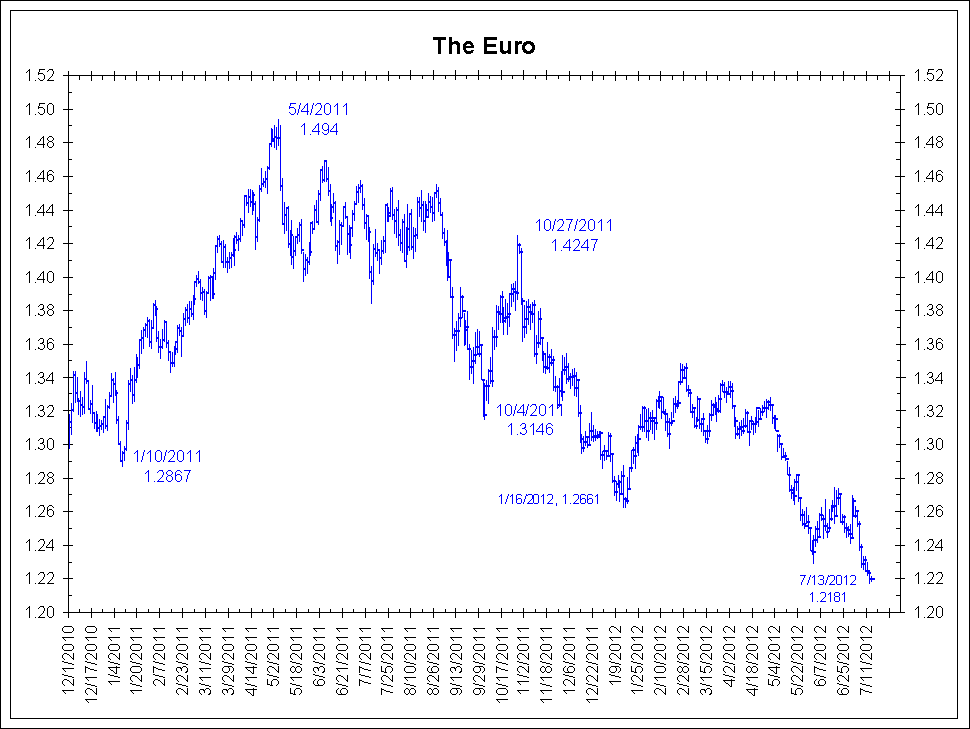Click to enlarge:
Barron’s – The Euro’s Fate
Against the intense media glare trained on crucial recent events of Europe, notably Greece’s election and the latest summit of European Union leaders, one important development was all but obscured. Airbus, the European consortium that is the main rival to Boeing, recently announced that it will establish its first production facility in the U.S. There, in sharp relief, is the tangible evidence of the crisis that besets Europe’s economy; the only way Airbus can compete with the rest of the world is to move away from the Old Country. Just as BMW and Mercedes-Benz before it, Airbus is moving to America’s Deep South in search of what it can’t find in Southern Europe — a highly productive, low-cost workforce that can compete globally, with the help of a competitive currency. That’s precisely what Europe, with unemployment levels not seen since the 1930s, needs — and what it sorely lacks. The cure for deficits is growth. And the quickest way to spur growth is via monetary reflation. A still-cheaper euro — at parity with the U.S. dollar — can restore Europe’s competitiveness, end its debt crisis, and save its currency. It worked before, in the last decade, and we’re now more than halfway to parity, from a peak of $1.60 in 2008 to around $1.22. After two years of haircuts and half-measures, the only way left to save the euro may be to debase the euro.
Financial Sense – The Euro and the Dollar
Now, the U.S. equity markets rose heading into the EU summit and launched soon after the details were given on the Friday morning of June 29th, which were:
* Single Pan-European bank regulator by year-end ‘12
* Once the supervisory mechanism was in place, the ESM could capitalize banks directly
* Ireland to get better bailout terms
* Spain to get aid from the EFSF until the ESM is up and running, without gaining seniority status on the debt
* ECB to act as agent for the bailout funds
* €120B growth pact
Since then, concerns have shifted to a weak Eurozone and the effect it will have on U.S. multinational companies. We had more negative preannouncements heading into this quarter than in the last earnings season and that has investors on edge. At the same time, we know that central banks are leaning hard in the accommodation direction. ISI Research counted 65 policy eases in the month of June, globally; in addition, we started July off with a quarter point cut in the ECB’s rate to 0.75%, England restarted QE with a £50B injection, and the People’s Bank of China cut rates a second time in the last month. As a bear, it’s a lot riskier shorting the market while central banks are easing. Central bank surprises are to the upside. Our own Federal Reserve Bank has extended Operation Twist, but that’s it. Investors are wondering what kind of jobs number or manufacturing number is it going to take to trigger QE 3. We’re already near similar price statistics the Fed used to initiate QE 2 in 2010. Look where oil is, look where the CPI is, and look where the CRB commodity index is as I mentioned last week.
Source: Bianco Resarch



What's been said:
Discussions found on the web: